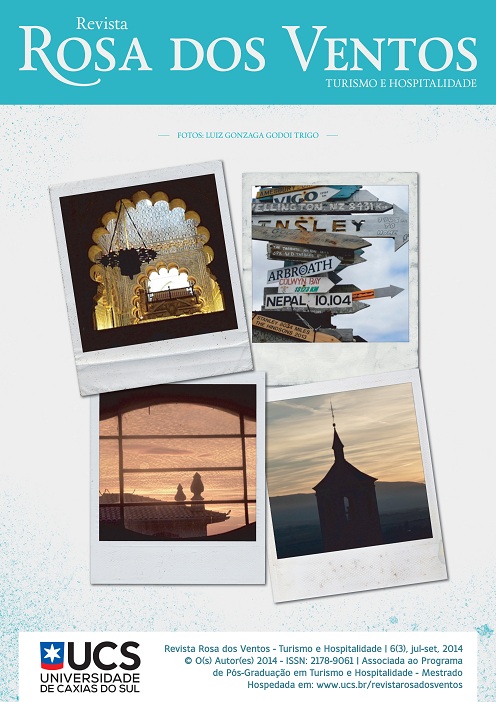Patrimônio Cultural e Turismo: Cenários sobre o Município de Inhambane, Moçambique
Palavras-chave:
Turismo. Tourism. Patrimônio Cultural. Cultural Heritage. Lugar. Place. Município de Inhambane, Moçambique. Inhambane Municipality, Mozambique. Moçambique.Resumo
O presente artigo perpassa as relações que podem ser estabelecidas entre patrimônio cultural e Turismo na [re]organização dos lugares turísticos outrora constituídos pela influência quase que exclusiva dos componentes do patrimônio natural. Por meio da análise e reflexão, constatamos que o Município de Inhambane, Moçambique, apresenta potencial turístico a partir da combinação única das condições do seu litoral – o qual dispõe de uma faixa de areia, condições únicas para a prática de mergulho, pesca desportiva –, com a herança árabe e colonial portuguesa presente na sua cidade antiga, ambos associados à beleza paisagística do patrimônio natural ali presente. Ao refletirmos sobre a importância do patrimônio cultural na diversificação da oferta turística, em atividades complementares e/ou substitutas às tradicionais formas de Turismo, observamos que por meio da [re]ativação deste patrimônio, quase desconhecido dos turistas e das instituições culturais locais, sugerimos que o município pode de forma sustentável [re]apropriar-se e se reconstituir, [re]produzir-se e ser consumido por novas tipologias de Turismo emergente/alternativo, ávidas pela utilização do patrimônio cultural, e não só pelo desfrute do tradicional Turismo de sol e mar, já presente neste município.
Cultural Heritage and Tourism: Setups for the Inhambane Municipality in Mozambique – This article goes through the relationships that can be established between cultural heritage and Tourism, in order to [re]organize the tourist places once constituted almost exclusively by the influence of the natural heritage components. After reflection, it was observed that Inhambane Municipality has a touristic potential, ranging from combination of coastline which features a strip of sand, unique conditions for scuba diving, sport fishing, and the ancient Arab city and Portuguese colonial, even the contemplation of an environment full of natural heritage. As we reflect about the meaning of cultural heritage in the diversification of the Tourism offer in complementary and/or substitute the traditional forms of Tourism activities, we observe that by the [re]activation of this heritage, almost unknown by the tourists and the local cultural institutions, we think that in a sustainable county can [re]appropriating and reconstructing, [re]produce and consumed by new types of emerging/alternative Tourism, eager for the use of cultural heritage, and not only by traditional sun and sand tourism, existing in this municipality.
Downloads
Publicado
Como Citar
Edição
Seção
Licença
Autores que publicam nesta revista concordam com os seguintes termos:
Os Autores mantém os direitos autorais e concedem à revista o direito de primeira publicação, com o trabalho simultaneamente licenciado sob a Creative Commons Attribution License que permitindo o compartilhamento do trabalho com reconhecimento da autoria do trabalho e publicação inicial nesta revista.
Autores têm autorização para assumir contratos adicionais separadamente, para distribuição não-exclusiva da versão do trabalho publicada nesta revista (ex.: publicar em repositório institucional ou como capítulo de livro), com reconhecimento de autoria e publicação inicial nesta revista.
Autores têm permissão e são estimulados a publicar e distribuir seu trabalho online (ex.: em repositórios institucionais ou na sua página pessoal) a qualquer ponto antes ou durante o processo editorial, já que isso pode gerar alterações produtivas, bem como aumentar o impacto e a citação do trabalho publicado (Veja O Efeito do Acesso Livre).








